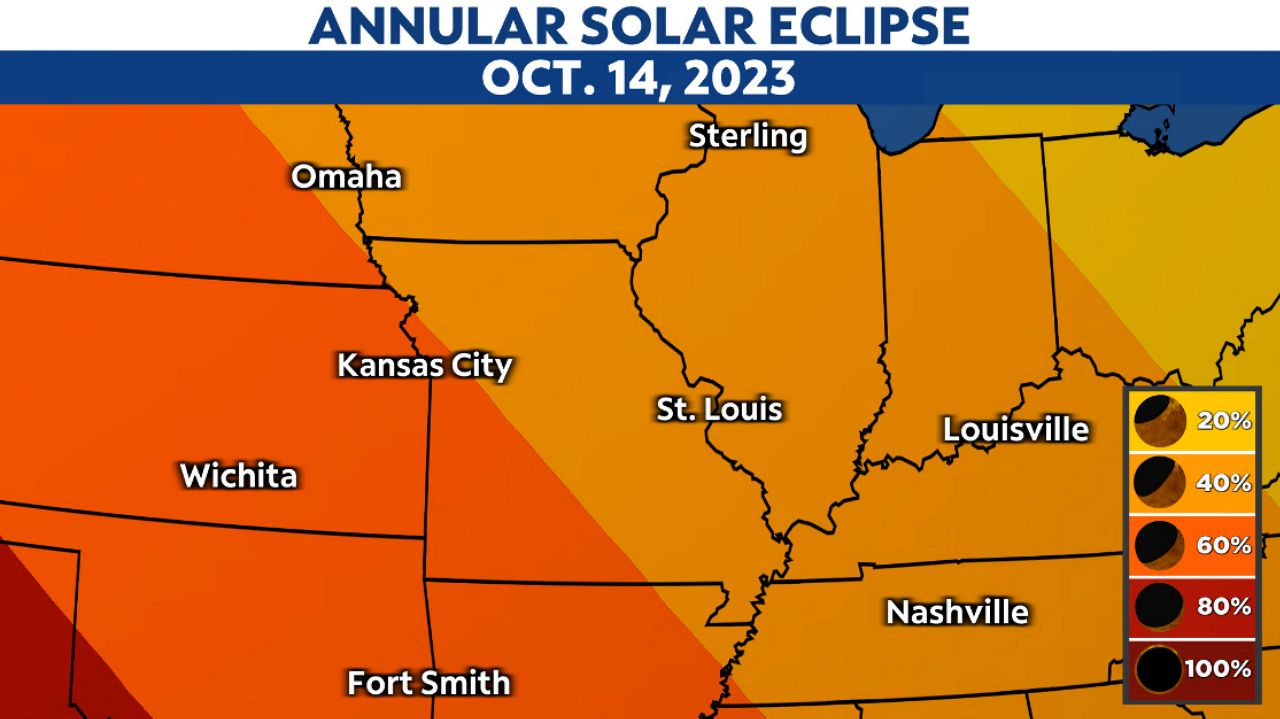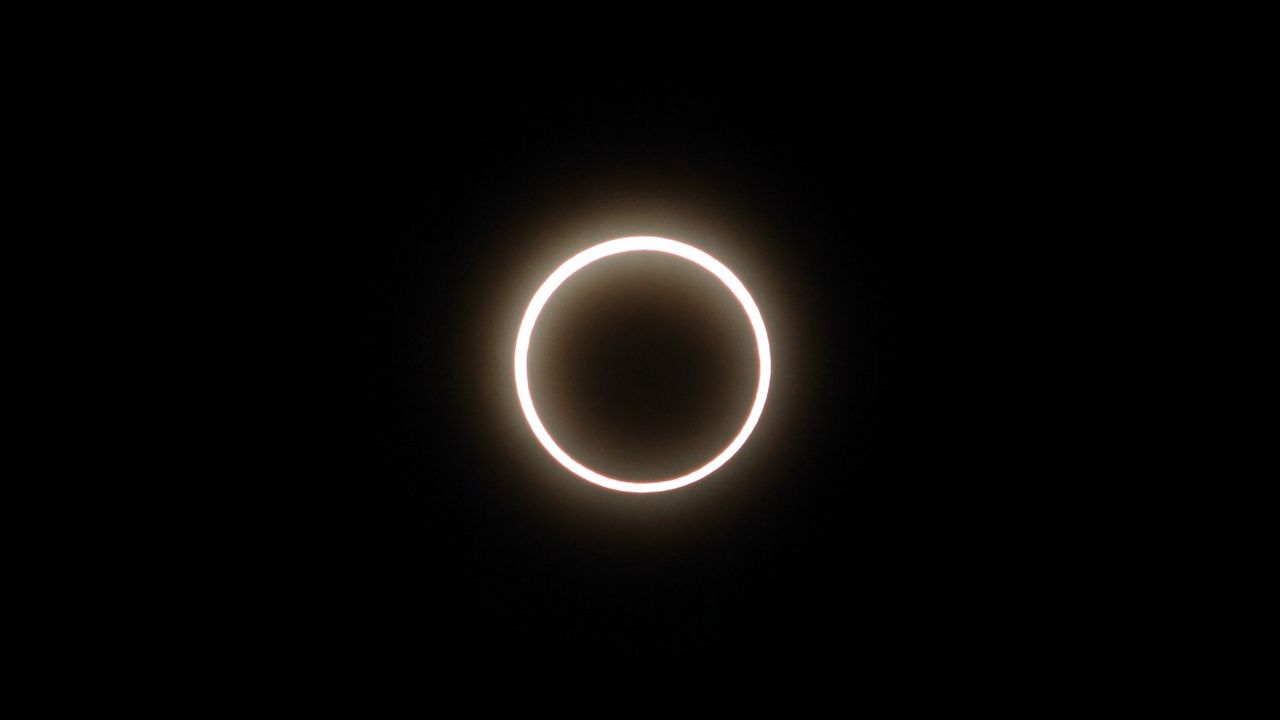A partial solar eclipse will occur this Saturday, giving folks in St. Louis a view of the celestial event.
While solar eclipses aren’t rare, there’s much talk about this showing and the upcoming one in April 2024 because of its visibility in the United States.
William Snyder, manager of the McDonnell Planetarium at the St. Louis Science Center, explains a solar eclipse as an “awe-inspiring natural event where the Earth passes through the Moon’s shadow in space, blocking out some of the Sun’s light.”
He adds, “the shadow that the moon casts in space is much smaller than the Earth, so only a tiny fraction of the globe is able to view any given total solar eclipse.”
A solar eclipse isn’t unusual, occurring at least twice yearly. What makes this event and the upcoming one in April rare is that it will be visible in the United States, more specifically parts of Missouri.
In fact, Snyder points out, “on average, a total solar eclipse is only visible from the same place on Earth every 375 years!”
The eclipse on Saturday is referred to as a partial eclipse because, as the moon orbits the sun in the shape of an ellipse, it will be too far away to completely block out the sun. During the time of maximum eclipse, a bright ring of light is still visible, called a “ring of fire.”
The word totality gets tossed around a lot during times of eclipses. Snyder explains, “Totality is the truly surreal time in a solar eclipse when the moon appears to completely cover the sun.”
At this time, the sky turns dark, as it if were dusk or dawn, looking like sunset, even if it is the middle of the day. The temperature drops and winds can change.
“Animal behavior also shifts. For example, you may hear crickets start to chirp as if it was nighttime,” says Snyder.
The eclipse on Oct. 14 will be a partial eclipse with the “ring of fire” visible during the maximum eclipse. However, this will not be visible in the St. Louis area.
“We will experience a roughly 54% partial solar eclipse, meaning at maximum eclipse approximately 54% of the sun will be blocked by the moon,” he explains.
Adding, “Anyone in the St. Louis area wanting to see the annual eclipse must travel. The path of maximum eclipse runs through the western and southwestern part of the United States.”

However, the eclipse event on April 8, 2024, will include full totality. Although the path of totality falls just outside the St. Louis metro, Snyder says local places like Cape Girardeau, Mo. and Carbondale, Ill. will be near the centerline and provide the best view of totality.
“It cannot be stressed strongly enough that no one should look directly at the sun without proper protection during any part of the solar eclipse,” emphasized Snyder.
There are different tools you can use to view the eclipse safely, such as solar glasses, which block out all but 1/100,000th of 1% of the Sun’s light. If you don’t have access to solar glasses, you can still view the eclipse indirectly by using projection.
He recommends using a kitchen colander or even making your own pinhole projector with a cereal box. Adding, “These devices work fine, but the view of the eclipse is typically quite small.”

The Science Center is hosting a viewing party for the eclipse outside the McDonnell Planetarium in Forest Park on Saturday. Free solar glasses will be available to the first 5,000 guests. Several solar telescopes will be available to view the eclipse up close safely.
The partial eclipse in the St. Louis metro will start at 10:32 a.m. and end at 1:26 p.m. Maximum eclipse, when roughly 54% of the sun will be blocked, will be reached just before noon at 11:57 a.m. The event will last from start to finish just shy of three hours.
“After the April 2024 eclipse, we will not experience another total solar eclipse in the United States for over 21 years until 2045," Snyder adds.
Our team of meteorologists dives deep into the science of weather and breaks down timely weather data and information. To view more weather and climate stories, check out our weather blogs section.





